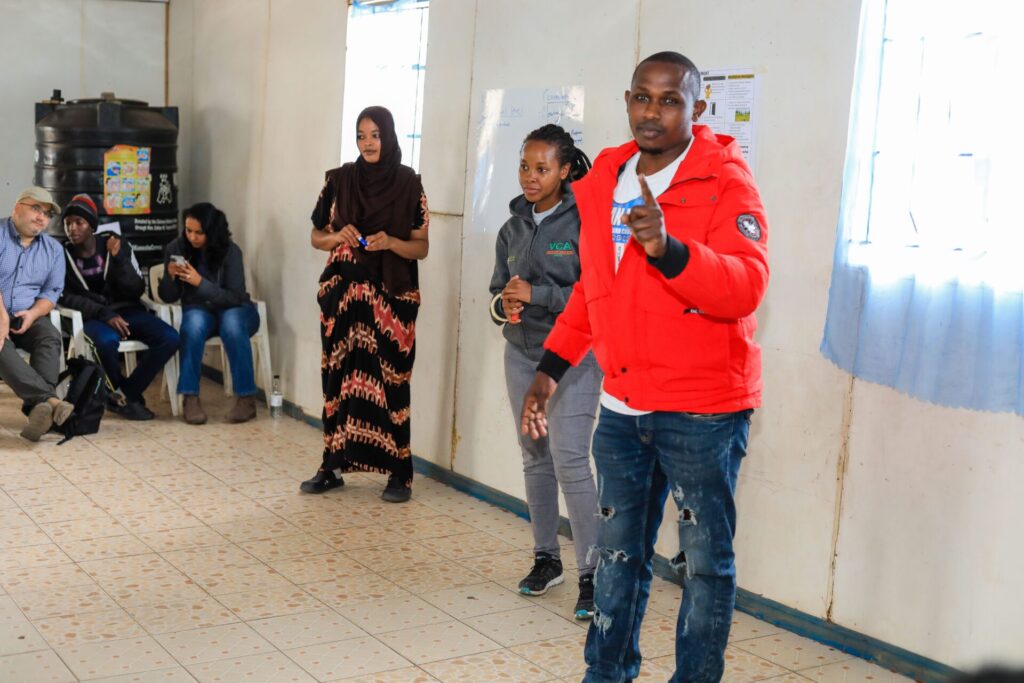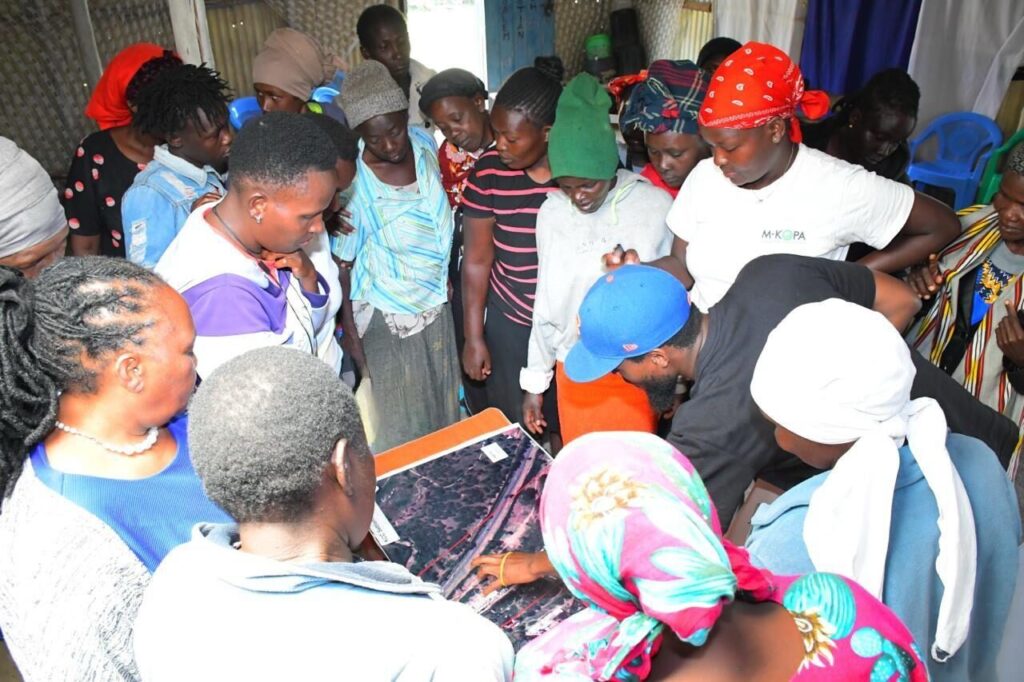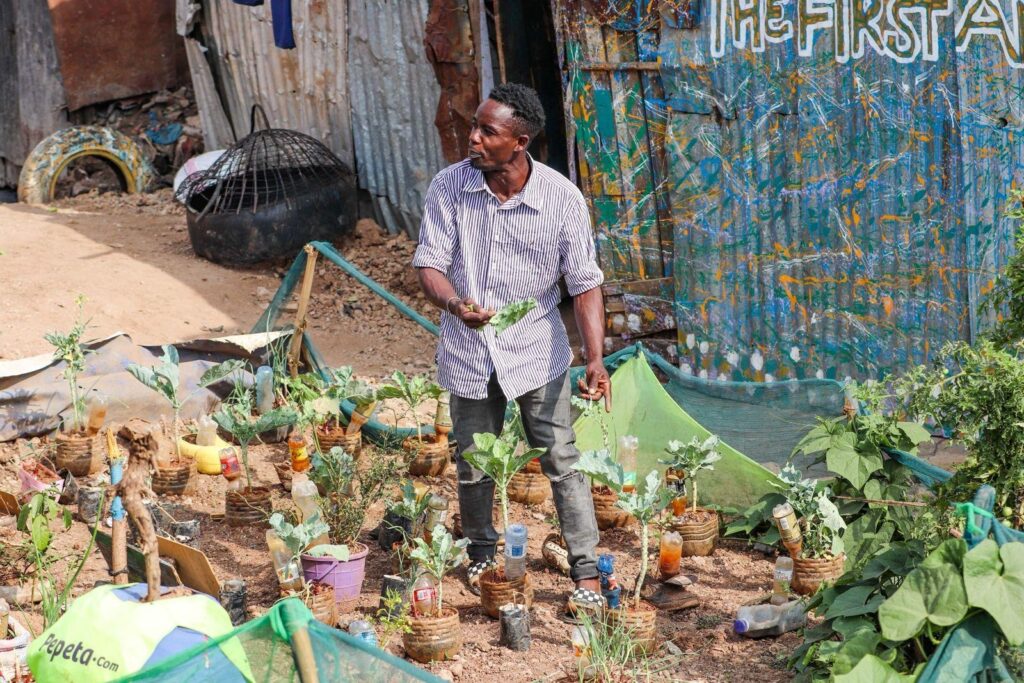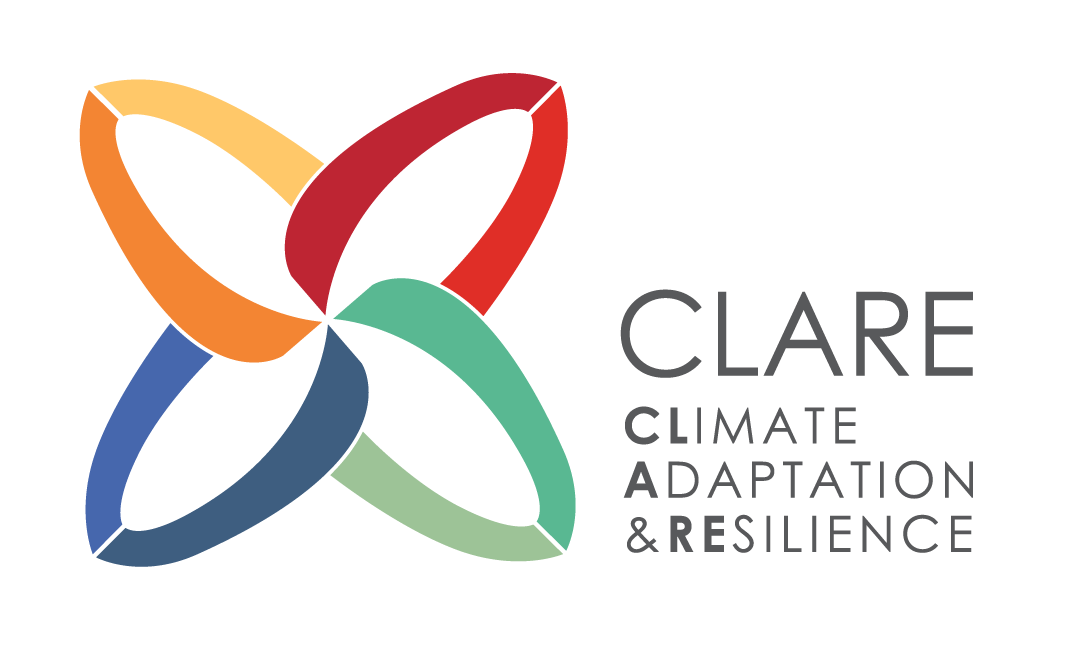
Beyond Data: Building Resilience with Urban TRACS
/
Authored by Milka Kori. Milka is an Urban Planner and Program Officer at SDI Kenya, supporting the implementation of the Urban TRACs project in Kenya.

Informal settlements are no strangers to research. Time and again, communities open their doors and voices to researchers, hoping their stories will spark change rather than just generating new knowledge. Yet too often, the findings echo what was said before, leaving people wondering what comes next.
The Urban TRACS (Transformative Research for Adaptation to Climate Change in Informal Settlements) project, implemented in Kenya and Sierra Leone with the support of the Liverpool School of Tropical Medicine (LSTM) and the Society for the Promotion of Area Resource Centres (SPARC), aims to shift this narrative. Instead of stopping at data collection and recommendations, it focuses on working hand in hand with communities, understanding their climate risks and, most importantly, building on what has already been done.
Together, we look at the efforts communities have initiated over the years, learn from their practices, and co-develop solutions that can grow from these foundations. At the core of the project are community co-researchers, local leaders, and local governments, who bring lived experience into every stage of the work. This ensures that research does not arrive as something new or imposed, but as a continuation of local knowledge, energy, and action. In this way, Urban TRACS becomes less about starting over and more about strengthening what already exists.
We recently had various community engagements in the different project sites, where residents openly spoke about the most pressing challenges they live with every day. Flooding came up again and again. Families described how, whenever it rains, they have to elevate their belongings off the floor to keep them from getting soaked, or even temporarily relocate to other areas until the waters recede. For many, heavy rainfall is not just an inconvenience but a cycle of loss, repair, and constant uncertainty.

Community members from the KCC settlement are mapping out vulnerable areas
Another recurring concern was the heat inside their homes. Many households explained how indoor temperatures rise to unbearable levels, especially in structures made from materials that easily absorb and trap heat, and those that are poorly ventilated. Communities also pointed to a lack of knowledge of disaster preparedness. Residents shared that they often have little to no training or systems in place to respond when disasters strike. While they rely on each other for immediate support, the absence of organised disaster management structures leaves them vulnerable when emergencies escalate.
Poor drainage was another issue raised across the settlements. Even a short downpour can turn pathways into streams, leaving behind stagnant water that lingers for days. This not only disrupts movement but also creates health risks, especially for children who must wade through water on their way to school or play. Waste management adds to this burden. In many settlements, waste collection is irregular or absent altogether, leaving households to dispose of waste in open spaces or drainage channels. Over time, these blockages worsen flooding, create foul smells, and attract pests.
Despite these challenges, communities are not standing still. In several sites, community-based organizations (CBOs) have already stepped in to clear blocked drains, organize household waste collection, and run awareness campaigns on safer waste disposal. These efforts may be small in scale, but they show the determination of residents to take action with the resources available to them.

A youth member from Mathare 4B showing one of their climate solutions
At the same time, people are clear about what is needed next. Many called for better drainage systems that could reduce flooding and keep homes dry. Others emphasised the importance of structured waste management, from regular household collection to community-led recycling initiatives. Improved housing design was also seen as a priority, building homes that are safer, cooler, and more resilient to climate shocks. In the communities, residents shared their vision of a resilience hub that can be used as a safe space that could double as a shelter during floods and a centre for sharing knowledge on climate adaptation. Alongside this, they proposed disaster management committees that would train and prepare residents to respond quickly when emergencies arise.
These conversations revealed something important: while the challenges are real and immediate, communities are already acting and imagining solutions. What they need is support to strengthen, scale, and sustain these efforts.
“We know these challenges, we experience them throughout; what we need to focus on is now on how to solve these challenges and come up with sustainable interventions”, Smruti Sparc
“Even as we think about the interventions, we also need to look at how we also include the PWDs who are most often left out”, Ijeoma LSTM
Experiencing disasters through Simulation

Hisham Tariq (LSTM) is leading the simulation exercise
Alongside the community engagements, we also ran an Extreme Weather Event Simulation. This exercise brought together residents, local governments, and other stakeholders to role-play how disasters are currently managed. Guided by Hisham, Systems Scientist at LSTM, participants stepped into one another’s roles. Community members became government officials, while local leaders acted as emergency responders.
The simulation revealed both the visible and hidden gaps in disaster response. Communication delays, lack of preparedness, unclear coordination, and the absence of proper decision-making processes stood out as critical barriers when emergencies strike. Participants could see how, without clear systems for making and acting on decisions, responses become slow, fragmented, and sometimes ineffective. At the same time, the role-play showed how complex disaster response really is, with choices made in one corner shaping outcomes for everyone else.
For us, the simulation underscored an important lesson: building resilience requires stronger connections between community voices and formal systems. It is not enough to only identify risks; we must also rethink how decisions are made, how responsibilities are shared, and how quickly action can follow.
This is where the Urban TRACS project comes in, transforming research into action by ensuring that communities are not just subjects of studies but active partners in shaping climate-resilient futures.
“The simulation exercise has made me realise that the decision-making process also requires a lot of thinking and consideration of different factors”, community resident Nyalenda A
The lessons from the simulation feed directly into the Urban TRACS project’s goals. At its core, the project is about turning these insights into action. By working with communities, local governments, and other stakeholders, Urban TRACS seeks to strengthen decision-making systems, close communication gaps, and ensure that disaster responses are faster, better coordinated, and more inclusive.
“The simulation exercise was for us to immerse ourselves in different roles to understand and see how we can respond to disasters and what it takes for us to become a resilient community”, Hisham Tariq, LSTM.
But Urban TRACS goes beyond disaster response. It is about building resilience in everyday life, addressing flooding, heat, waste management, poor drainage, and weak housing structures, not as isolated problems, but as interconnected challenges that require collective solutions. Importantly, it builds on what communities already do, valuing local knowledge and practices as the foundation for longer-term change.

Community members from Nyalenda are prioritizing their interventions
In this way, Urban TRACS redefines the role of research. Rather than stopping at reports and recommendations, it becomes a tool for co-developing solutions, bridging community priorities with government systems, and creating settlements better prepared to adapt to climate change.
At its heart, Urban TRACS envisions a future where research does not just document vulnerability, it helps communities write new stories of resilience, strength, and climate-ready futures
Published
CLARE Projects
CLARE Partners

